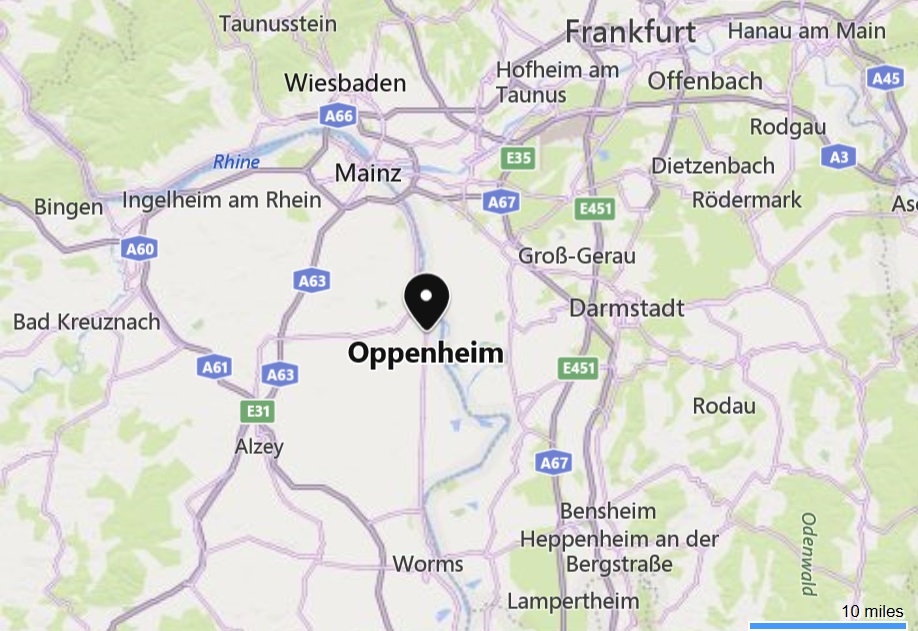on the Upper Rhine between Mainz and Worms.
In 765, the first documented mention of the Frankish village was recorded in the Lorsch Codex, in connection with an endowment by Charlemagne to the Lorsch Abbey. Further portions of Oppenheim were added to the endowment in 774. In 1008, Oppenheim was granted market rights.
In October 1076 Oppenheim gained special importance in the Investiture Controversy. At the princely session of Trebur and Oppenheim, the princes called on King Henry IV to undertake the “Walk to Canossa”. After Oppenheim was returned to the Empire in 1147, it became a Free Imperial City in 1225, during the Staufer Emperor Frederick II’s. At this time, the town was important for its imperial castle and the Burgmannen who lived there.
In the 14th century, the town was pledged to the Electorate of Mainz and beginning in 1398, it belonged to the territory of the Electoral Palatinate.
In 1621, the Oppenheim town chronicle reports a great fire in which the Oppenheim Town Hall was almost completely destroyed.
Oppenheim passed, in 1816, to the Grand Duchy of Hesse-Darmstadt.
Restoration of St. Catherine’s Church to its Gothic form was in three building phases: 1836-1846, 1879-1889 and 1934-1937.
The Katharinenkirche (St. Catherine’s church) in Oppenheim is regarded as an important Gothic church building on the Rhine, along with the cathedrals of Cologne and Strasbourg. Construction began probably in 1225, when Oppenheim was granted Town privileges.

